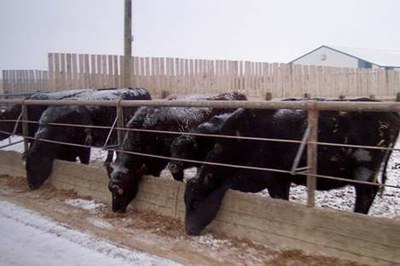|
Late fall and early winter typically is the reset period for cowherds. Following weaning and working the cows; open, unsound, nonproductive and undesirable cows are sorted off and sold or to be sold and, replaced with retained bred heifers or purchased replacements. This turn over in the herd sets the stage for the spring calving season and comes at a major cost. The value between cull cows and replacements is significant, making cow ownership cost the second greatest cost for producers (behind annual feed costs). over in the herd sets the stage for the spring calving season and comes at a major cost. The value between cull cows and replacements is significant, making cow ownership cost the second greatest cost for producers (behind annual feed costs).
The primary reason for culling cows is for failing to breed on time. As drivers of profitability, herd management needs to be focused on achieving high reproduction while managing feed costs. Herds experiencing high culling rates associated with poor breeding rates should consider the following four areas for attention.
- – Nutrition and reproduction are closely related. Make sure cow nutritional needs are being met including vitamins and minerals. Maintain cows in sufficient body condition for optimal fertility through proper stocking and winter feeding. If a high cost of supplemental feed is required over ranch forage to keep cows in shape, consider breeding cows more moderate in production and associated needs (less size, growth and milk).
- –Select sires of heifers that will be retained for replacement for the right traits. Preferably the bulls were raised in herds managed similarly to your herd, have dams that have demonstrated regular breeding and soundness, and themselves display thriftiness and early sexual maturity. Consider data and genetic predictions for stayability, maternal calving ease, heifer pregnancy, scrotal circumference, and indexes that combine input and output traits (mature size and weaning weight).
- –Let nature help select heifers adapted for high fertility by exposing heifers born in the early part of the calving season, that have grown well on a high forage wintering program, for a short breeding season (less than 45 days). These early catch heifers have a much better prospect or staying on schedule and in the herd; especially if they are bred to true calving ease service sires and don’t experience difficulty in calving.
- – Maintain a high health status herd by annual vaccinations, culling of unthrifty stock, and biosecurity with new herd additions. Additionally screen bulls for fertility by semen sampling and breeding soundness exams. Utilize veterinary and diagnostic services to help identify causes of infertility and pregnancy loss.
|

 over in the herd sets the stage for the spring calving season and comes at a major cost. The value between cull cows and replacements is significant, making cow ownership cost the second greatest cost for producers (behind annual feed costs).
over in the herd sets the stage for the spring calving season and comes at a major cost. The value between cull cows and replacements is significant, making cow ownership cost the second greatest cost for producers (behind annual feed costs).